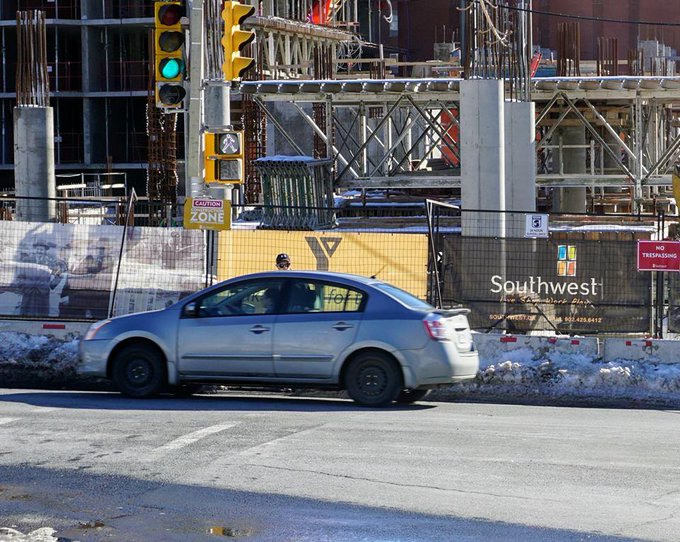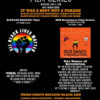
Yet another serious incident at a crosswalk in Bedford recently hospitalized two pedestrians, one with life threatening injuries. My email to our road safety steering committee below requests urgent action to improve the safety of our dangerous crosswalks. For an explanation of the Committee’s work and responsibilities, please review the end of this Halifax.ca webpage on road safety.
Dear All
Request for action, and an update on the development of a road safety action plan
I am contacting you to provide you with information that you may not be aware of, also a request for action.
You may be aware that I have been actively communicating with vulnerable road users and municipal (also provincial) leadership for a few years regarding safety issues.
I have been extremely concerned that known dangers have not been addressed adequately and urgently through identifying inexpensive countermeasures to mitigate key dangers, HRM-wide. I wrote this article for The Star about the need to take urgent action, and advocate regularly on issues affecting pedestrians. I write emails to leadership, have attended municipal meetings, galvanised community support for petitions to the Province and Municipality, organised public events, and have also provided advice to road users on key road safety hazards in the absence of clear and specific advice on the most serious and regular hazards from authorities.
The focus of my efforts has always been aspects of our infrastructure that present most danger to vulnerable road users and our apparent reluctance to address those issues, perhaps because they interfere with the priority of maintaining traffic flow. This does not seem to have changed since we approved the “Vision Zero” framework.
I am concerned that key advocates in the community who are involved each day directly with vulnerable road user road safety concerns (including Halifax Cycling Coalition, the Crosswalk Safety Society of Nova Scotia and Walk ‘n’ Roll) are not involved in the road safety committee steering committee and have not been actively consulted over road safety plans (to my knowledge) for years.
Any effective road safety effort must involve both the community and non-governmental organisations who are working directly with vulnerable road users. Initial consultation is not enough, especially when it is clear from the consultation responses from these groups (see our road safety framework) that efforts to address issues were inadequate. The World Health Association explain here why road safety initiatives must involve road safety advocacy groups.
As a pedestrian in Halifax, I have observed that little has been done to adapt crosswalks so they are safe for use – for example ensuring traffic speed is reduced through structural measures that slow drivers, and the provision of clear traffic control lights that eradicate error. In Europe, those two aims are achieved with measures like traffic lights at mid-block crosswalks, often combined with raised crosswalks and pinch-points (including on artery roads), also traffic lights at intersections which prevent drivers from turning over crosswalks while the walk sign is on.
Consequently, 60 to 67% of pedestrian incidents occur on crosswalks – see page 16 of the 2019 end of year pedestrian incident report. This is extremely high and demonstrates; (1) that our crosswalks are critically unsafe for use by vulnerable road users, and (2) that immediate and urgent action is required to adapt them so they are safe for all to use.
For comparison, please review this report from the European Commission which highlights the need to improve safety for pedestrians at crossing points even when they only account for 20% of incidents:
Accidents involving pedestrians and cyclists occur frequently at facilities designed for pedestrians and cyclists such as pedestrian crossings, cycle tracks, and cycle lanes. This means that these facilities are not necessarily safe enough to prevent accidents (OECD, 1998). However, pedestrian crossings probably also are those locations at which roads are most often crossed. In the United Kingdom, over 20% of accidents happen at places where people should be safe, such as on the pavement or at a pedestrian crossing.
So far this year, two senior citizens have died on crosswalks that are unsafe. One on a crosswalk I have used very regularly with my family on Dunbrack, known to be dangerous due to highway-speed traffic, multiple lanes and overhead lights which don’t ensure drivers yield consistently enough to protect vulnerable road users. Another fatality was caused by a driver turning right on green over a signalized intersection crosswalk on Portland Street, killing an elderly lady. Both pedestrians were crossing legally when they were hit and killed.
Recently, another man over 50 years-old using a crosswalk legally was left with life-threatening injuries due to a driver turning left on a green traffic light, as confirmed to me by police.
Excluding a road worker, all eight nine pedestrians killed on our roads since the beginning of 2018 were reported by the media to be over 55 years old.
It is no exaggeration to refer to the lack of safety on our crosswalks as a crisis, and to expect urgent remedial measures to be implemented HRM-wide in the form of (for example) pinch-points, pedestrian refuge islands, raised crosswalks and traffic lights adjusted so pedestrians have a period to cross the road when they are protected from turning traffic.
Incidents are not confined to specific geographical areas and occur everywhere on crosswalks that lack appropriate safety measures. Neither can tweaks such as “head starts” for pedestrians adequately address safety issues, as we know from the incidents that have continued after these adaptations, aslo comprehensive US-wide data collated by the Federal Highways Authority which concluded these “leading pedestrian intervals” reduce pedestrian incidents by just 13%.
The regular avoidable deaths and serious incidents on crosswalks must be addressed, and urgently. As members of a steering committee responsible for implementing a genuine Vision Zero road safety action plan (therefore looking to achieve engineering improvements that eliminate causes of driver error) I request;
1. You identify and agree a clear working priority and policy to effect road user safety over traffic flow; the core aim and requirement of Vision Zero.
2. You agree to include local road safety advocates and organisations in your steering committee so they can provide road user led input on action points and priorities.
3. You request that the Vision Zero component of the road safety framework is drafted for your review before your next meeting – this is Emphasis area 3: Pedestrian collisions; “develop action plan for worst ten types of collisions. Consider rates/frequencies, consistency of collision patterns and crosswalk specific assessments.”
4. You discuss the disproportionate number of senior fatalities on our roads, request data concerning the causes, and request an action plan that identifies and addresses the safety requirements of our most vulnerable road users – the elderly, disabled and children.
5. You consider the need to adapt and initiate new policies that will realistically help you achieve the target of 20% less fatalities by 2023. That will require urgent amendments to our traffic calming policy (see for example Ottawa’s policy), a safe school-zones policy (incorporating working with the community to ensure active transport routes to school are safe), and the road safety action plan and countermeasures toolkit referred to at No. 3 above.
6. You identify what capacity staff have to initiate the above processes urgently, and seek to involve known external engineering consultants if action cannot be sufficiently progressed by staff over the next few months.
7. Given the very high rate of crosswalk incidents over many years, you request that we complete safety audits at a representative range of key crosswalk location-types that are known for fatalities and serious incidents; in particular RA-5 crosswalks (with the overhead signs) and signalized intersections. This should be conducted by an external engineering professional (as recommended by the FHWA) to ensure impartiality and appropriate specialist expertise.
Finally, we do not and have not lacked data required to effect safety improvements now. Data analysis in HRM has been a long term effort, and clearly identifies what locations require safety improvements. If data is not ready to be analysed now, historical data can be used from previous data analysis including from Nova Scotia’s Crosswalk Safety Taskforce in 2007, also location specific police incident data from 2012 onwards, and some extremely good analysis completed in the semi-annual pedestrian safety reports, for example this one from 2018.
I would be grateful if you could please respond to my requests.
With best wishes, Martyn Williams
If you walk, cycle or use a wheelchair and are affected by road safety issues, please join HRM Safe Streets for Everyone. If your local crosswalk needs a crosswalk flag, please contact the Crosswalk Safety Society. Please remember to report issues affecting your safety to our municipal authorities using the 311 service.
With a special thanks to our generous donors who make publication of the Nova Scotia Advocate possible.
Subscribe to the Nova Scotia Advocate weekly digest and never miss an article again. It’s free!



